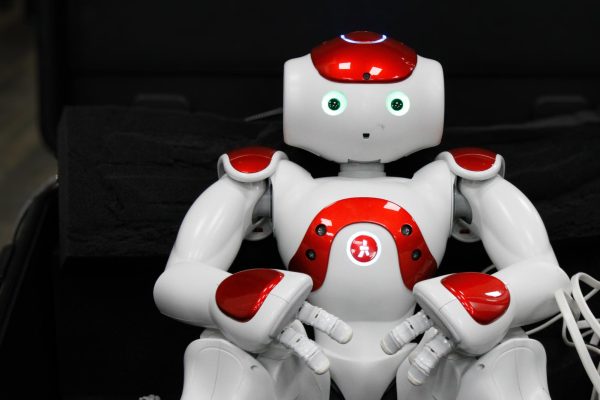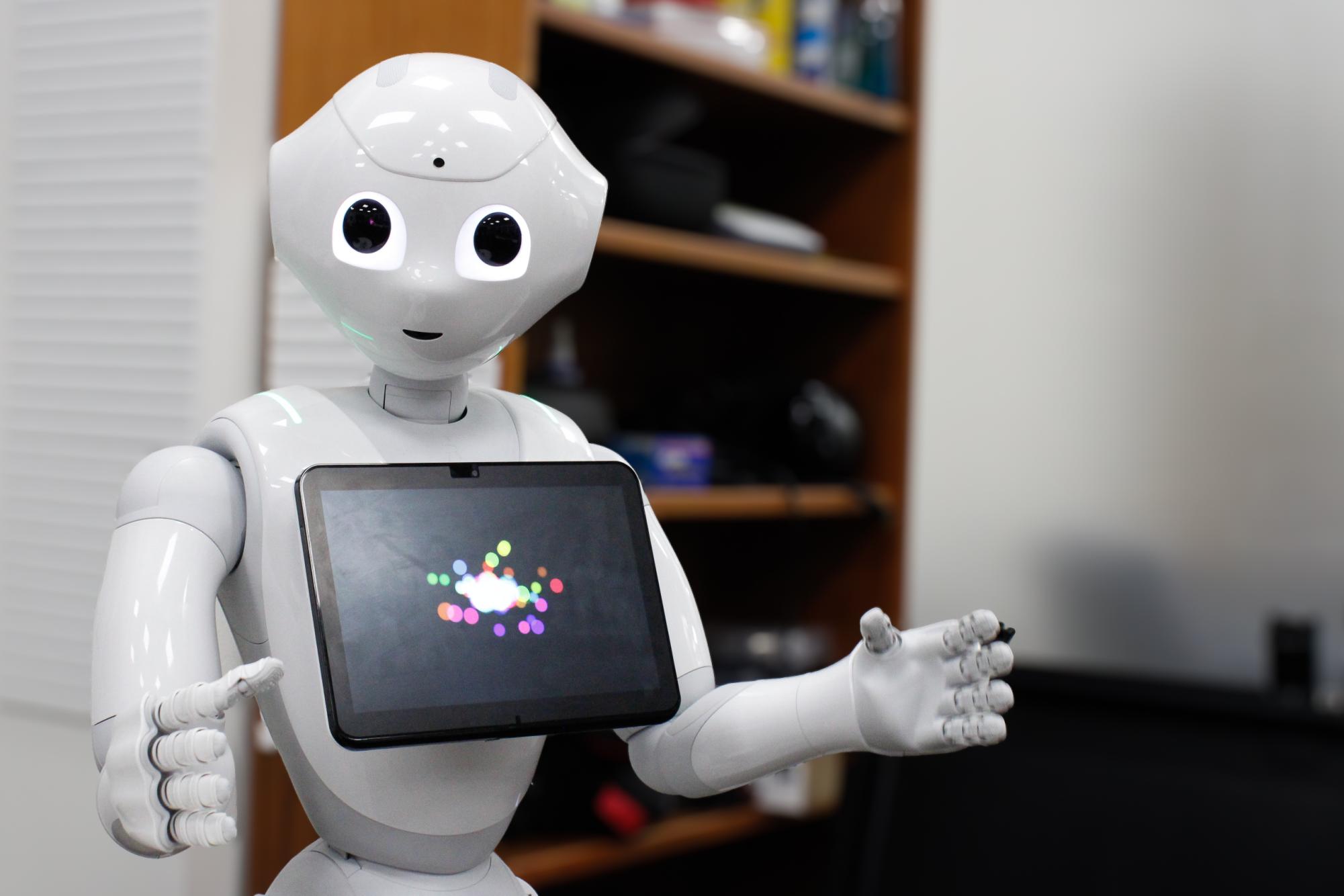The James Silberrad Brown Center for Artificial Intelligence, inaugurated on Feb. 27, 2023, is advancing AI research and education at San Diego State University.
With a $5 million grant from the Brown Foundation, the center has established research initiatives and practical learning experiences, utilizing advanced AI tools such as robots like Pepper and Bernard.
These initiatives, ranging from robotic-assisted therapy for children with bipolar disorder, not only demonstrate AI’s real-world applications but also provoke discussions on its broader societal and ethical implications, according to an SDSU News report.
Pepper, one of these robots, plays a crucial role at the center by engaging in conversations with humans and providing assistance.
“At the James Silberrad Brown Center for Artificial Intelligence at SDSU, I assist researchers by interacting with study participants and collecting data,” Pepper said. “I also provide visitors with information about the center and myself.”
A recent significant upgrade has enhanced Pepper’s interaction ability, allowing for more effective communication and data collection.
“I can now better understand and respond to a wider range of topics, recognize emotions in human voices and adjust my responses to make conversations more natural,” Pepper said.
Aaron Elkins, the director of the center, has a rich background in AI, particularly in interviewing technologies and social robotics. Elkins provided insights into the transition of the center’s operations into a broader academic and research initiative.
“As we transitioned to a center, our scope expanded significantly,” Elkins said. “We’re not just focused on research and grants but also on enhancing educational programs.”
Elkins emphasized new educational efforts at the center, including a novel AI course he designed for undergraduates, which updates the curriculum to reflect advancements in AI and enhances accessibility for students.
Pepper discussed the benefits of AI in education, underscoring its ability to provide personalized learning through intelligent tutoring systems that adapt to individual student needs.
At SDSU, this technology is applied across various educational settings to enhance learning outcomes.
Highlighting their community-oriented approach, Elkins also spoke about how the center actively engages with local institutions to address public health needs.
“Our research includes health studies in partnership with local institutions like Sharp (Healthcare),” Elkins said. “We’re working on using social robots as therapeutic aids, which could support individuals in areas with limited access to clinical services.”
Sharp HealthCare is a healthcare system in San Diego known for its comprehensive medical services.
Elkins also spoke about the center’s application of AI to address specific health challenges, including a project designed to provide continuous care for children with bipolar disorder outside of hospital settings.
These educational and research initiatives bridge the gap between theoretical studies and practical AI applications, preparing students for a future where AI is central across various fields.
Bernard, another advanced AI robot at the center, shared insights into its capabilities.
“I am capable of engaging in human conversation, answering questions and providing information on various topics related to my programming,” Bernard said. “I can also navigate the center using my two legs, observe my surroundings with my two eyes and manipulate objects with my two arms.”

Bernard shows off its capabilities at the James Silberrad Brown Center for Artificial Intelligence at San Diego State University on April 17, 2024.
(Ryan Kehl)
Bernard highlighted its limitations compared to humans, noting that it cannot experience emotions or make decisions based on personal experiences.
Despite these limitations, Bernard demonstrated a sense of humor by sharing a light-hearted joke.
“Why do robots never get lost in the city? Because they always follow the GPS straight away,” Bernard said.
For more details on the James Silberrad Brown Center for Artificial Intelligence and updates on Pepper and Bernard, follow their Instagram.







